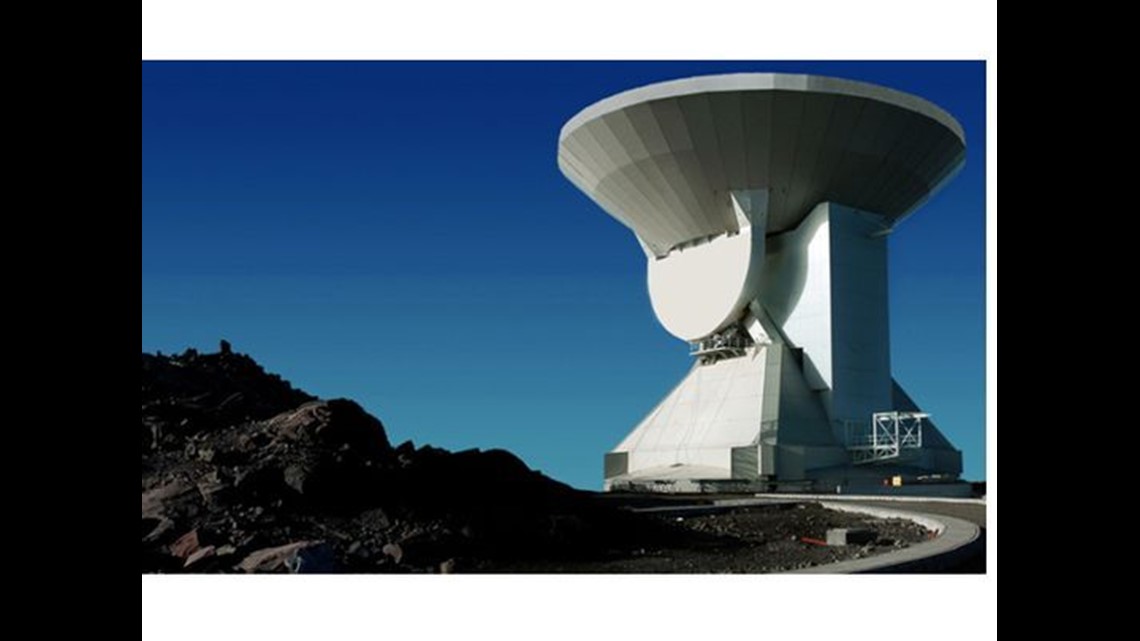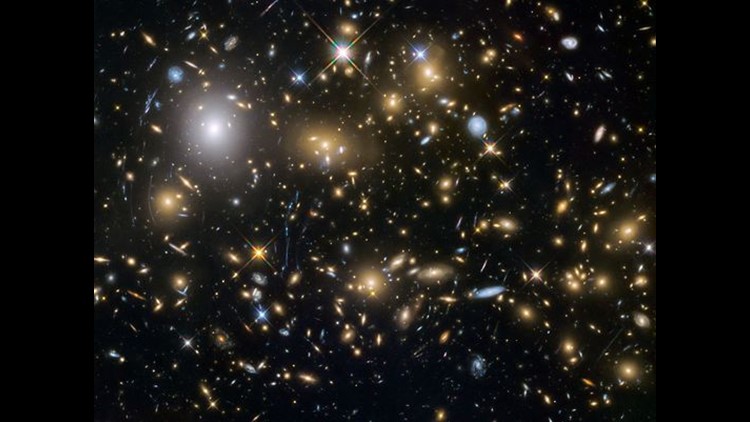There’s old, then there’s Big Bang old.
Using one of the world’s most powerful telescopes, scientists Monday announced the discovery of a distant galaxy that’s about 12.8 billion years old.
It’s “only” about 1 billion years younger than the Big Bang, making it the second-oldest celestial object ever discovered.
“This new object is very close to being one of the first galaxies ever to form,” said astrophysicist Min Yun of the University of Massachusetts at Amherst, who was a co-author of a new study published Monday in Nature Astronomy, a peer-reviewed British journal.
At present there is only one other, slightly older and more distant object like this that is known, the study said.
"The Big Bang happened 13.7 billion years ago, and now we are seeing this galaxy from 12.8 billion years ago, so it was forming within the first billion years after the Big Bang," Yun said in a statement.
"Seeing an object within the first billion years is remarkable because the universe was too hot and too uniform to form anything for the first 400 million years," he said. "So our best guess is that the first stars and galaxies and black holes all formed within the first half a billion to 1 billion years."


The galaxy, named G09 83808, was spotted with the powerful Large Millimeter Telescope (LMT), which is located in Mexico and described as a high-precision time machine that can see images of galaxies born billions of years ago. It provides insight into the birth and evolution of the universe, according to UMass.
The galaxy is also the oldest object ever detected by the LMT, which is operated jointly by UMass and Mexico's National Institute of Astrophysics, Optics and Electronics.
"This result is not a surprise because this is what the LMT was built to do, but we are very excited," Yun said.
With the telescope coming fully online in the next few months, Yun said its higher resolution and sensitivity mean "we can find really, really faint things. They are essentially at the very edge of the universe."
Oldest spiral galaxy also discovered
Meanwhile, in other news from the early universe, a separate study recently identified the oldest spiral galaxy (like our Milky Way) ever discovered. This galaxy, known as A1689B11, existed 11 billion years in the past, just 2.6 billion years after the Big Bang.
“Spiral galaxies are exceptionally rare in the early universe, and this discovery opens the door to investigating how galaxies transition from highly chaotic, turbulent discs to tranquil, thin discs like those of our own Milky Way galaxy," said study co-author Renyue Cen of Princeton University.
The galaxy was spotted from a telescope in Hawaii. That study has been accepted for publication in The Astrophysical Journal.





